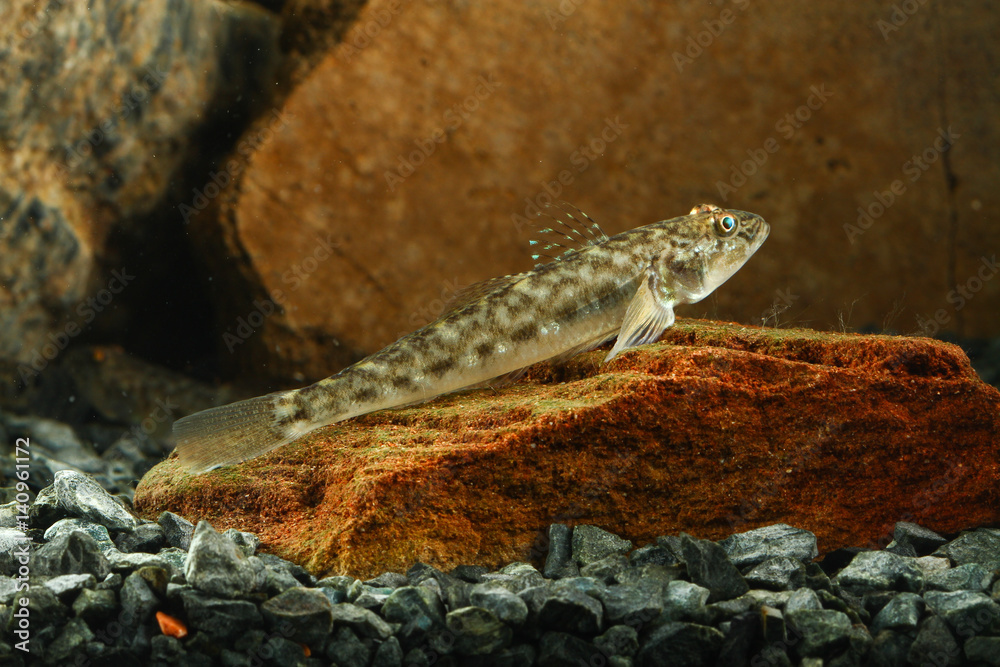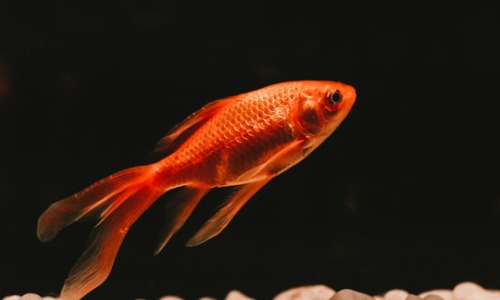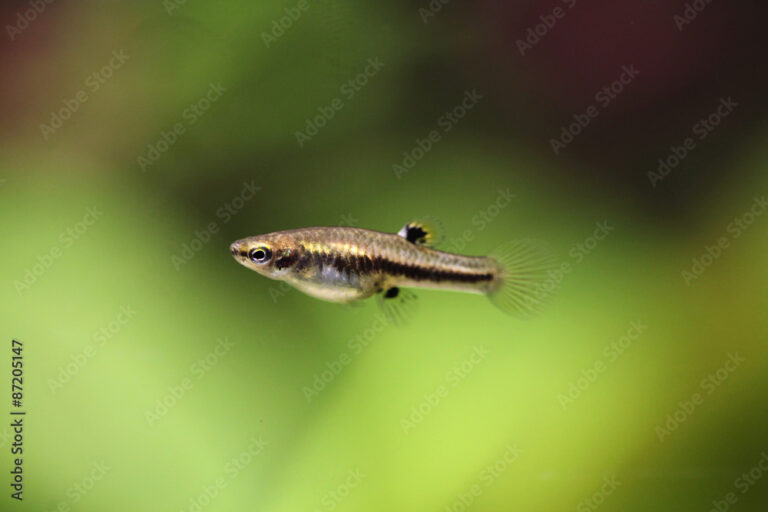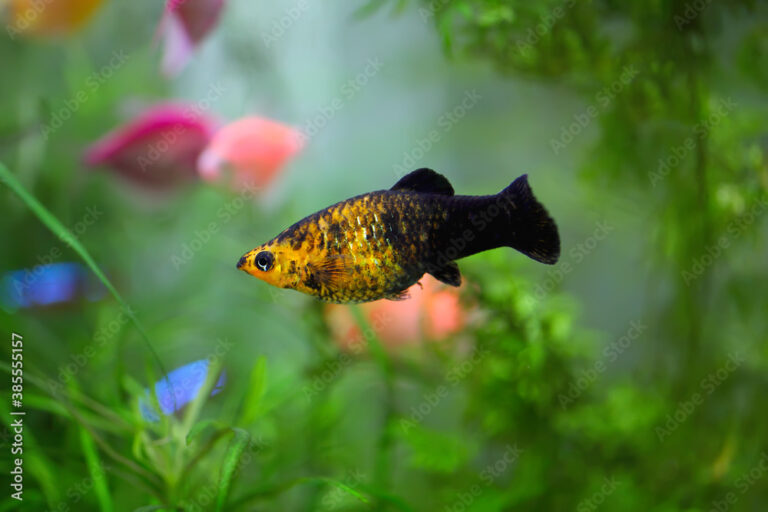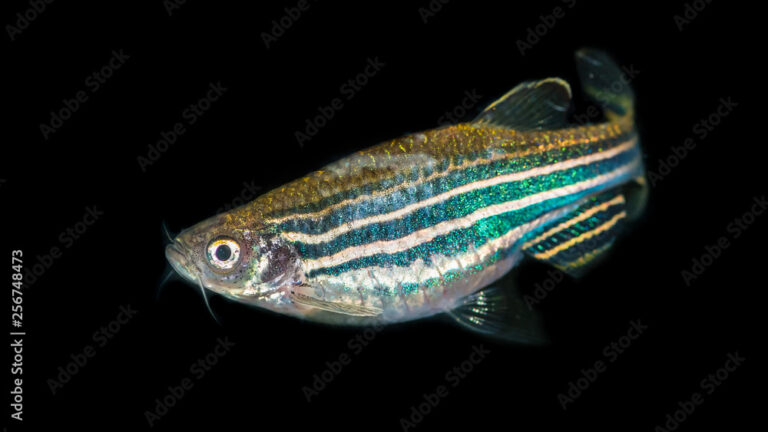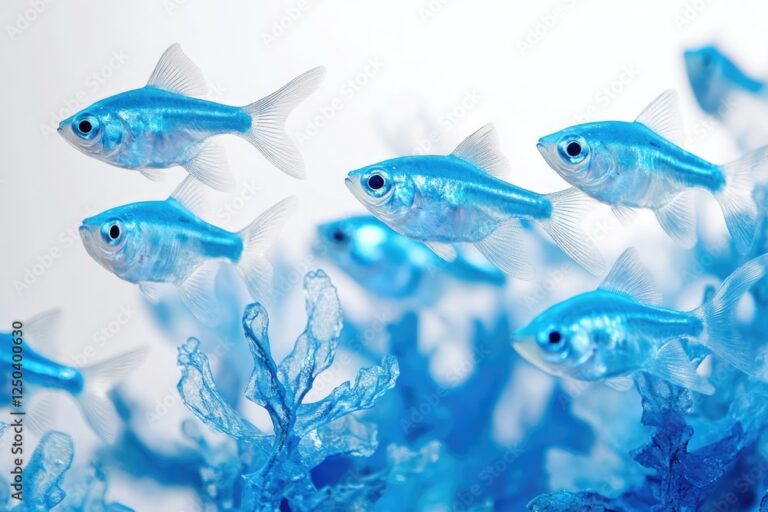Freshwater Gobies 101: A Complete Guide for Fishkeepers and Aquarium Enthusiasts

Fishkeeping is an art, a passion, and for many, a deeply rewarding hobby. If you’re looking for a captivating, quirky species to add to your aquarium, look no further than freshwater gobies. These bottom-dwelling fish are adored for their unique behavior, vibrant colors, and surprisingly versatile nature. Whether you’re a seasoned aquarist or a beginner, freshwater gobies can bring a dynamic charm to your aquarium community.
This blog will take you on a deep dive into everything you need to know about freshwater gobies—from their origins and aquarium setup to their feeding habits and compatibility with other fish. By the end, you’ll have all the knowledge you need to create a thriving home environment for these fascinating creatures.
What Are Freshwater Gobies? An Introduction
Freshwater gobies belong to the Gobiidae family, one of the largest families of fish, with over 2,000 species. Gobies are typically small, measuring between 1 and 5 inches, which makes them ideal for home aquariums. Known for their vibrant colors, intricate patterns, and peculiar movements, gobies capture the attention of fishkeepers around the world.
“Freshwater gobies bring a unique charm to any aquarium; their quirky behavior is endlessly entertaining,” says Dr. Emily Carter, a marine biologist who has studied gobies extensively.
Freshwater gobies are relatively low-maintenance, making them suitable for hobbyists of all skill levels. However, a deep understanding of their needs ensures they thrive in your aquarium.
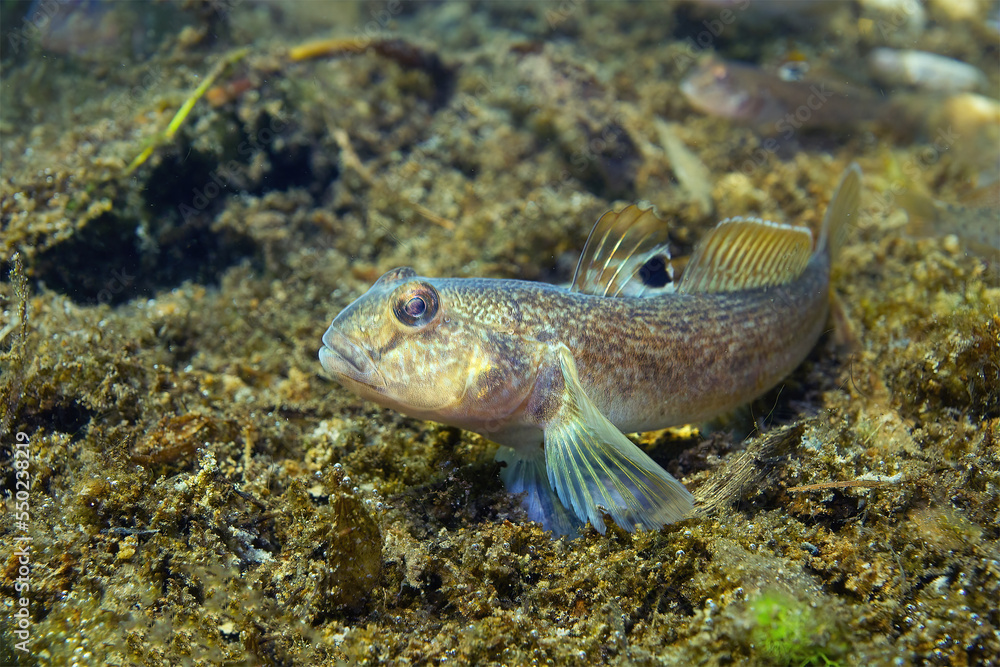
Origins and Natural Habitat of Freshwater Gobies
Freshwater gobies are found in diverse ecosystems across the globe—from the brackish waters of Southeast Asia to the clean, fast-flowing streams of Europe and North America. Their habitats vary dramatically depending on the species. For example, some gobies inhabit sandy riverbeds, while others thrive in rocky coastal regions.
Understanding their natural habitat helps greatly when replicating the ideal aquarium environment. “Proper research is key,” explains John Doe, an experienced fishkeeper. “Understanding their natural habitat is the first step to creating a thriving environment.”
Top Types of Freshwater Gobies for Aquariums
There are numerous species of gobies suitable for aquariums, each with unique traits. Below are some favorite picks among hobbyists:
- Bumblebee Goby (Brachygobius doriae): Small and vibrant, these striped gobies are best kept in brackish or lightly salted water.
- Knight Goby (Stigmatogobius sadanundio): Known for their intriguing spotted pattern and predatory nature, these gobies thrive in controlled brackish water.
- Rhinogobius Goby (Rhinogobius spp.): Rhinogobius gobies hail from Asia and prefer swift, clean streams. They are lively and personable fish.
- Peacock Gudgeon (Tateurndina ocellicauda): With iridescent blue and yellow stripes, these are among the prettiest gobies to keep in a freshwater setting.
Knowing the specific requirements of the goby species you choose will help you tailor your aquarium to meet their needs.
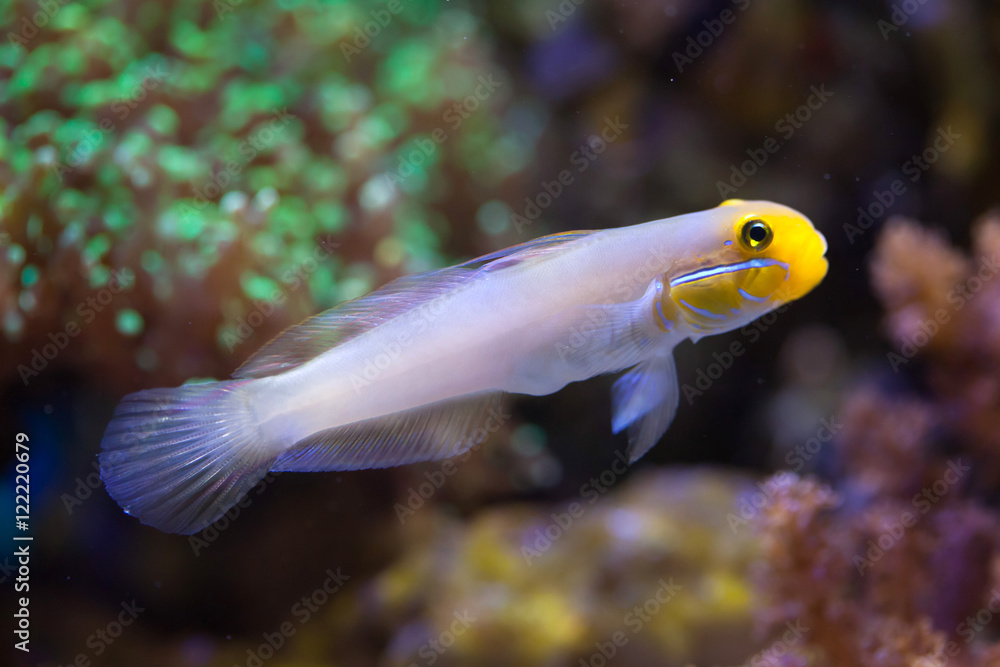
Creating the Ideal Aquarium Environment
Every goby species has slightly different tank requirements, but there are universal tips for ensuring their comfort and health:
Tank Setup
- Size: While gobies are small, a minimum tank size of 15-20 gallons ensures adequate swimming space.
- Substrate: Choose a sandy or soft substrate to protect delicate fins and mimic their natural habitat.
- Decor: Add hiding spots with rocks, driftwood, and caves to replicate their environment and provide areas for retreat.
- Water Flow: Some gobies thrive in tanks with moderate to high water flow, while others prefer calmer waters. Research your species to adjust accordingly.
Water Parameters
- Maintain clean, well-filtered water.
- Temperature Range: 72°F to 78°F works for most species.
- pH Level: Aim for neutral to slightly alkaline water, around 6.5–7.5.
- Brackish Species Note: For gobies like bumblebee or knight gobies, add aquarium salt to achieve salinity suitable for brackish water.
Feeding and Diet
Gobies may be small, but they have big appetites! They’re opportunistic eaters, primarily feeding on small invertebrates in the wild.
“Don’t underestimate the importance of a varied diet,” advises Jane Smith, an aquarium store owner. “A happy goby is a well-fed goby!”
Here are some diet staples for freshwater gobies:
- Live/Frozen Foods: Daphnia, brine shrimp, and bloodworms are their favorites.
- High-Quality Pellets/Flakes: Supplements their diet with added essential nutrients.
- Vegetation (Species-Specific): Some gobies enjoy greens such as blanched zucchini or spirulina.
Feed gobies in small, frequent portions to mimic their natural grazing behavior.
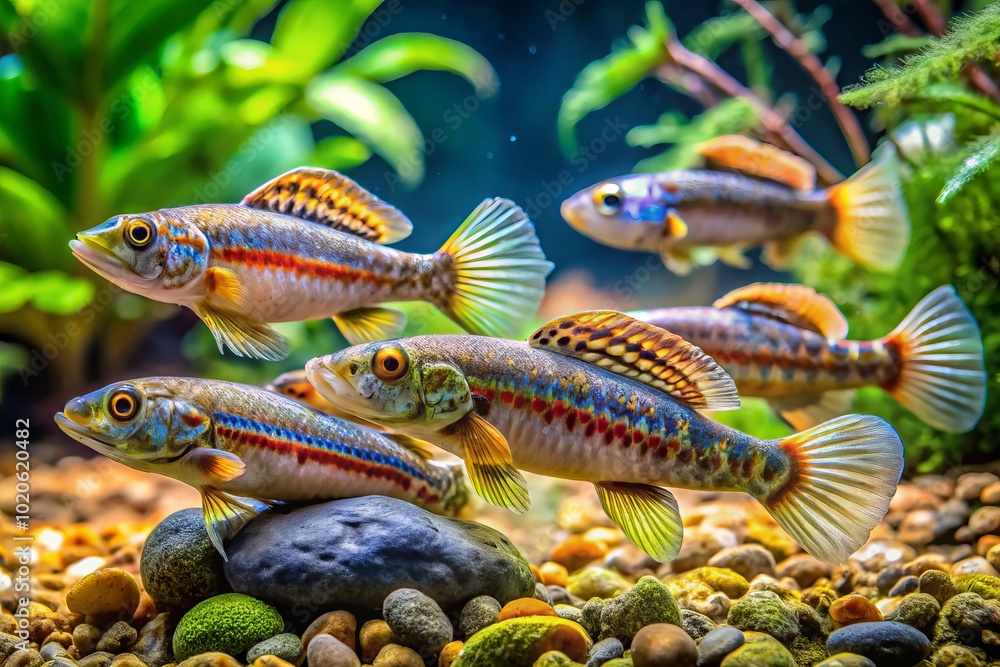
Compatibility with Other Species
Gobies have peaceful dispositions but can be territorial with their own kind. When setting up a community tank, focus on compatibility to ensure harmony.
Tips for Community Tanks
- Compatible Tank Mates: Tetras, rasboras, and peaceful bottom-dwellers are good choices. Avoid larger, aggressive fish.
- Case Study: A hobbyist successfully housed their bumblebee goby with cardinal tetras and bamboo shrimp in a 30-gallon tank. Regular monitoring and a well-sized tank ensured coexistence.
Providing ample hiding spaces goes a long way in maintaining peace among tank mates.
Breeding Freshwater Gobies
Breeding gobies requires patience and specific conditions, but the rewards are worth the effort. Gobies are egg-layers, often depositing eggs in hidden caves. Males typically guard the eggs until they hatch.
Personal Experience
One enthusiast reported success breeding bumblebee gobies in a 20-gallon brackish aquarium with a single male and two females. Regular water changes, dim lighting, and ample hiding spots facilitated the process.
Common Diseases and Prevention Tips
Gobies, like all aquarium fish, are susceptible to diseases such as ich, fungal infections, and bacterial illnesses. Prevention is always better than treatment.
Disease Prevention
- Maintain Water Quality: Regular water changes and proper filtration are vital.
- Quarantine New Fish: Minimize the risk of introducing pathogens.
- Balanced Diet: A varied diet boosts immunity.
Case Study
One fishkeeper successfully treated ich in their goby using a combination of raised water temperatures and an ich-specific treatment. The goby recovered, and preventive measures were implemented to avoid recurrence.
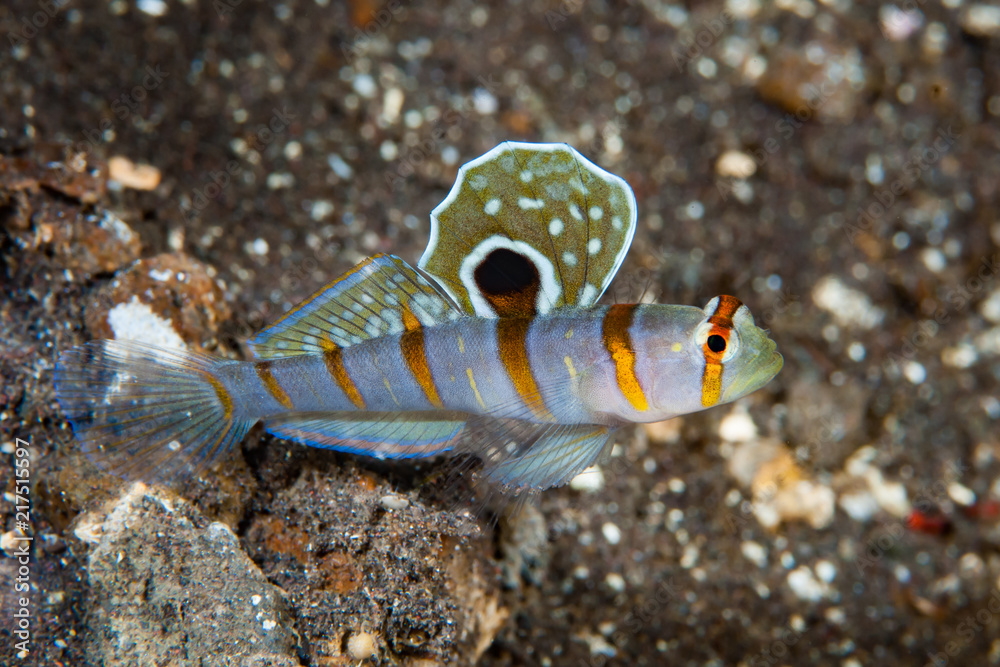
The Allure of Freshwater Gobies in Home Aquariums
Freshwater gobies are more than just another fish—they’re a captivating addition to any aquarium, offering personality, vibrant colors, and fascinating behavior. With proper care, these delightful creatures can thrive and bring endless joy to your underwater world.
Whether you’re drawn to the striped bumblebee goby or the striking peacock gudgeon, there’s a goby waiting to make a splash in your tank.
Are you ready to experience the charm of gobies for yourself? Start by researching your favorite species and ensuring your aquarium is goby-ready. Happy fishkeeping!

